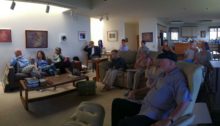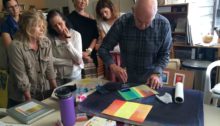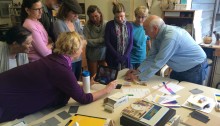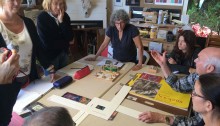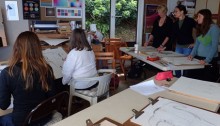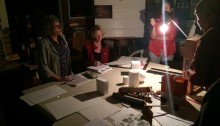Color Relationships 2, Fall 2016 week 1
The first session of the Color Relationships 2 class for Fall 2016 was held on Wednesday, August 31. A group of 10 students met to continue their ongoing study of color, its appearance in the visual world, and how to re-create these phenomena through an understanding of color relationships. In this first session, the class went through a review of Color 1 lessons, a study of films and how they modify other colors, and discussed their first assignment. Please see the full post for class materials, including videos and slide presentations.

